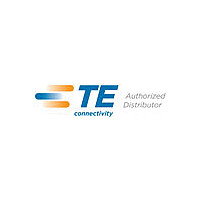1055479-1 TE Connectivity, 1055479-1 Datasheet - Page 118

1055479-1
Manufacturer Part Number
1055479-1
Description
Connector Accessories Cable Bender
Manufacturer
TE Connectivity
Type
Benderr
Datasheet
1.1055479-1.pdf
(126 pages)
Specifications of 1055479-1
Lead Free Status / RoHS Status
RoHS Not Applicable
7118
Attenuation
A wave loses energy (attenuates) in several ways: (1) The
resistance of the inner and outer conductors is small but
can be significant over long lengths and will produce some
heat. (2) The dielectric may be lossy; its resistance is high
but not infinite, and some energy is lost. (3) Electromagnetic
energy radiates at high frequencies; significant energy loss-
es are caused by radiation of electromagnetic energy (the
cable acts like an antenna). (4) Energy is reflected due to
impedance mismatches. The combination of these four
types of losses are referred to as the insertion loss of a
transmission line system. Connectors have similar losses.
Characteristic Impedance
A parameter which defines the behavior of a cable,
connector, or any propagating system is Characteristic
Impedance, Zo. The characteristic impedance of a loss-
less cable is related to the inductance per unit length, L,
and the capacitance per unit length, C, as follows:
The equivalent circuit of a transmission line is shown in Figure
15. R represents the conductor resistance for a unit length
For a coaxial cable the characteristic impedance is given by:
where D is the inner diameter of the outer conductor and
d is the outer diameter of the inner conductor, respectively.
Similar equations apply for other geometries such as two
parallel wires.
The maximum power is transferred between two systems if
they have the same impedance. This is called impedance
matching. However, impedance variations that are short
compared to a wavelength can have a negligible effect on
signal loss.
Standard impedances are 50 ohm, 75 ohm and 93-125
ohm. Most systems use 50 ohm because it is a compro-
mise between maximum power transmission and minimum
line loss. The telephone industry and the broadcast indus-
try use 75 ohm for minimum line attenuation. The need for
low capacitance instrumentation cable has produced the
93-125 ohm systems. The higher impedances are generally
achieved by changing the conductor diameters and by
modifying the dielectric material to add air.
Catalog 1308940
Revised 5-03
www.tycoelectronics.com
Z
0
Typical Transmission Line Schematic
Zo =
L
Zo = L/C in ohms
138
Dimensions are in inches and
millimeters unless otherwise
specified. Values in brackets
are metric equivalents.
x Log
Figure 15
10
RF Connectors
Appendix A - Theory and Application
R
d
D
in ohms
C
Dimensions are shown for
reference purposes only.
Specifications subject
to change.
Reflections
When the characteristic impedance changes in a transmis-
sion line system, part of an incident wave is reflected. The
reflection coefficient can be calculated as:
Where Vi and ZO are the incident voltage and impedance
of the first media. V
and impedance of the media that caused the reflection.
The decibel loss due to reflection is given by:
VSWR
The traditional way to determine the
reflection coefficient is to measure
the standing wave caused by the
superposition of the incident wave
and the reflected wave. Traditionally
the voltage is measured at a series
of points using a slotted line. The
ratio of the maximum divided by the
minimum is the Voltage Standing
Wave Ratio (VSWR). The VSWR is
infinite for total reflections because
the minimum voltage is zero. If no
reflection occurs the VSWR is 1.0.
VSWR and reflection coefficient are
related as follows:
Most present instrumentation
measures the reflection coefficient
and calculates the VSWR.
Figure 16 represents the direct
relationship between VSWR and its
equivalent in return loss
(expressed in dB).
Multiple Reflections
If there is a series of impedance changes, each one will
have a reflection coefficient. The total reflection coefficient
is the vector addition of each of the individual coefficients
accounting for the distance between reflections and the
reflection of any reflected waves. Even though the calcula-
tions are difficult, a total VSWR can still be measured.
Multiple reflections can produce a resonance phenomenon
that is unique to wave theory. Properly understood some seri-
ous difficulties can be avoided. An example will make the
point clear. Consider an electromagnetic wave with a wave-
(Continued)
VSWR = (1 + )/(1 - )
USA: 1-800-522-6752
Canada: 1-905-470-4425
Mexico: 01-800-733-8926
C. America: 52-55-5-729-0425
Reflection Coefficient =
VSWR vs. Return Loss
Return Loss = 10 Log
R
Figure 16
and Z
R
represent the reflected voltage
South America: 55-11-3611-1514
Hong Kong: 852-2735-1628
Japan: 81-44-844-8013
UK: 44-141-810-8967
10
= _____ = _______
( ____ ) dB
V
V
1-
1
i
R
2
Z
Z
R
R
+ Z
- Z
O
O
























